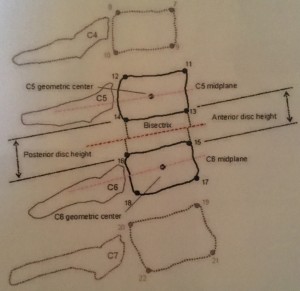Comparison of intervertebral disc spaces between axial and anterior-lean cervical traction
Chin-Teng Chung et al. Eur Spine 18;(10) 2009.
There have been minimal investigations as to the changes in spinal structures during traction which may prevent exploration of the possible therapeutic mechanism of cervical traction. 96 radiographs were reviewed comparing axial to anterior-lean (AL). This entails the patient seated and facing the traction apparatus (as opposed to typical over-the-door units where the patient faces away from the door and weight). The results suggest two benefits: the posterior disc spaces were significantly widened vs. axilla posture. Since one of the main functions of the disc is to dampen compressive loading the better an instrument reduces posterior loading then theoretically the better effect. Secondly the ‘extension moment’ created by the mandibular/occiput sling was counteracted by the anterior/flexion skull position (more pronounced occiput “pull” into flexion.
Comment: interestingly the age-old mandibular/occiput sling still remains the most common form, worldwide of cervical traction. So this study gives us comparative information on the sling from axial to anterior but not a comparison of the iconic ‘occiput-exclusive’ unit (Saunders/comfort-trac types). However as our short video on the Pro-neck seated device suggests; when patients cannot tolerate or improve with supine methods AL positioning affords an excellent alternate…additionally Laser or US can be effectively administered during the traction to help improve healing as well.

Leave a Reply
Want to join the discussion?Feel free to contribute!